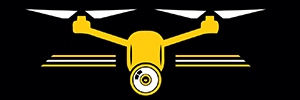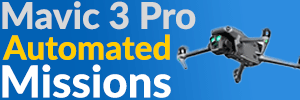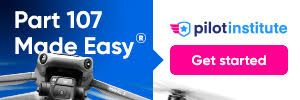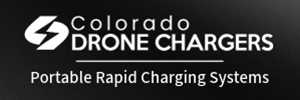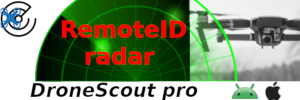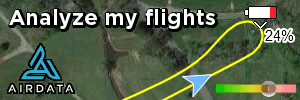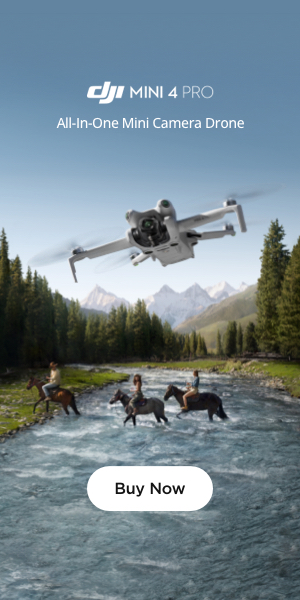Going to try my hand at mapping. Pix4d or drone deploy or something else? Mavic 2 pro or zoom? 150 ft ceiling.
You are using an out of date browser. It may not display this or other websites correctly.
You should upgrade or use an alternative browser.
You should upgrade or use an alternative browser.
Mapping noob
- Thread starter John G.
- Start date
This is a broad question with an answer that depends on what you are trying to do.
To just make maps to learn how to do it is easy.
Choose the Mavic 2 Pro. As mentioned the 1" sensor will have better results over the Mavic 2 Zoom. You can map with the Zoom, but you cannot change the zoom level while mapping as it will change your focal length.
1. Image acquisition
You can use Drone Link, Pix4D Capture, Drone Deploy or other apps to collect your images. The height will depend on what you want your GSD or resolution of your map to be. Lower is higher resolution, but too low may have problems with processing.
Next nadir or oblique images. Nadir images work but miss some of the sides of buildings. If you want a great model you can do oblique or mix oblique or nadir.
2. Software
Free - WEB ODM (May have small cost) Maps Made Easy (Small datasets) or Reality Capture.
You can obtain a free trial from most photogrammetry software. Drone Deploy, Pix4D, Agisoft Pro etc.
Cloud Options - Drone Deploy, Pix4D Cloud. These are upload images and sit back and relax.
Desktop Options - Pix4Dmapper, Pix4Dmatic, Agisoft Pro. You install the free trial onto your computer. The computer needs a decent CPU and Graphics card if you have a large number of images. There are various tutorials from the company and on Youtube to get you processing.
Learn about datums, coordinate systems and in particular elevations. To fully use your data in the correct context and have your outputs have correct coordinates systems you will need to learn a bit about WGS84, NAD83 and then about elevations such as EGM96 and NAVD88. Having the wrong coordinate systems will introduce problems and inaccuracies as well as totally incorrect elevations. You will run into a problem with the Mavic 2 Pro if you do not use Ground Control in terms of its elevations being incorrect.
Learn the basics and then if you like it, you can start to explore introducing accuracy and precision into your data with Ground Control, RTK and PPK workflows. But the learning curve is a long path of learning.
Pilot Institute has a course that will lead you along the way. But when you get into RTK and PPK, it is lacking and has some minor errors in datums/coordinate systems.
To just make maps to learn how to do it is easy.
Choose the Mavic 2 Pro. As mentioned the 1" sensor will have better results over the Mavic 2 Zoom. You can map with the Zoom, but you cannot change the zoom level while mapping as it will change your focal length.
1. Image acquisition
You can use Drone Link, Pix4D Capture, Drone Deploy or other apps to collect your images. The height will depend on what you want your GSD or resolution of your map to be. Lower is higher resolution, but too low may have problems with processing.
Next nadir or oblique images. Nadir images work but miss some of the sides of buildings. If you want a great model you can do oblique or mix oblique or nadir.
2. Software
Free - WEB ODM (May have small cost) Maps Made Easy (Small datasets) or Reality Capture.
You can obtain a free trial from most photogrammetry software. Drone Deploy, Pix4D, Agisoft Pro etc.
Cloud Options - Drone Deploy, Pix4D Cloud. These are upload images and sit back and relax.
Desktop Options - Pix4Dmapper, Pix4Dmatic, Agisoft Pro. You install the free trial onto your computer. The computer needs a decent CPU and Graphics card if you have a large number of images. There are various tutorials from the company and on Youtube to get you processing.
Learn about datums, coordinate systems and in particular elevations. To fully use your data in the correct context and have your outputs have correct coordinates systems you will need to learn a bit about WGS84, NAD83 and then about elevations such as EGM96 and NAVD88. Having the wrong coordinate systems will introduce problems and inaccuracies as well as totally incorrect elevations. You will run into a problem with the Mavic 2 Pro if you do not use Ground Control in terms of its elevations being incorrect.
Learn the basics and then if you like it, you can start to explore introducing accuracy and precision into your data with Ground Control, RTK and PPK workflows. But the learning curve is a long path of learning.
Pilot Institute has a course that will lead you along the way. But when you get into RTK and PPK, it is lacking and has some minor errors in datums/coordinate systems.
Thank you for your reply, and yes it is a pretty good learning curve!This is a broad question with an answer that depends on what you are trying to do.
To just make maps to learn how to do it is easy.
Choose the Mavic 2 Pro. As mentioned the 1" sensor will have better results over the Mavic 2 Zoom. You can map with the Zoom, but you cannot change the zoom level while mapping as it will change your focal length.
1. Image acquisition
You can use Drone Link, Pix4D Capture, Drone Deploy or other apps to collect your images. The height will depend on what you want your GSD or resolution of your map to be. Lower is higher resolution, but too low may have problems with processing.
Next nadir or oblique images. Nadir images work but miss some of the sides of buildings. If you want a great model you can do oblique or mix oblique or nadir.
2. Software
Free - WEB ODM (May have small cost) Maps Made Easy (Small datasets) or Reality Capture.
You can obtain a free trial from most photogrammetry software. Drone Deploy, Pix4D, Agisoft Pro etc.
Cloud Options - Drone Deploy, Pix4D Cloud. These are upload images and sit back and relax.
Desktop Options - Pix4Dmapper, Pix4Dmatic, Agisoft Pro. You install the free trial onto your computer. The computer needs a decent CPU and Graphics card if you have a large number of images. There are various tutorials from the company and on Youtube to get you processing.
Learn about datums, coordinate systems and in particular elevations. To fully use your data in the correct context and have your outputs have correct coordinates systems you will need to learn a bit about WGS84, NAD83 and then about elevations such as EGM96 and NAVD88. Having the wrong coordinate systems will introduce problems and inaccuracies as well as totally incorrect elevations. You will run into a problem with the Mavic 2 Pro if you do not use Ground Control in terms of its elevations being incorrect.
Learn the basics and then if you like it, you can start to explore introducing accuracy and precision into your data with Ground Control, RTK and PPK workflows. But the learning curve is a long path of learning.
Pilot Institute has a course that will lead you along the way. But when you get into RTK and PPK, it is lacking and has some minor errors in datums/coordinate systems.
PHZ
Well-Known Member
UAV Coach (UAVCoach.com), has an excellent mapping course online and also a two day workshop. I have flown maps for seven years, and now use a M3E with a base station, and GCPs (mostly, depending on the required accuracy).
I teach for UAV Coach (not the mapping course). I took the online course as I could do it at no cost to me, and I learned a bunch.
I highly recommend it.
I teach for UAV Coach (not the mapping course). I took the online course as I could do it at no cost to me, and I learned a bunch.
I highly recommend it.
I concur with PHZ, the UAV Coach has a course "Drone Mapping Essentials." I took the course and I highly recommend it. It's very good at giving you info on a broad range of things you will need to know including drones and software and the pros can cons for different programs. We've used the Mavic 3T, the Matrice 350 RTK, and now the Mavic 3E with RTK and GCPs and getting great accuracy.
KJC Imaging
Active Member
Similar threads
- Replies
- 6
- Views
- 3K
- Replies
- 4
- Views
- 3K
- Replies
- 3
- Views
- 2K
- Replies
- 3
- Views
- 1K
DJI Drone Deals
New Threads
-
-
Mini 4 Pro Istanbul where the East meets West - Eminönü
- Started by MPone
- Replies: 1
-
Wanting to understand "Power Banks" and what I'll need....
- Started by MavicFlyer2
- Replies: 5
-
-




